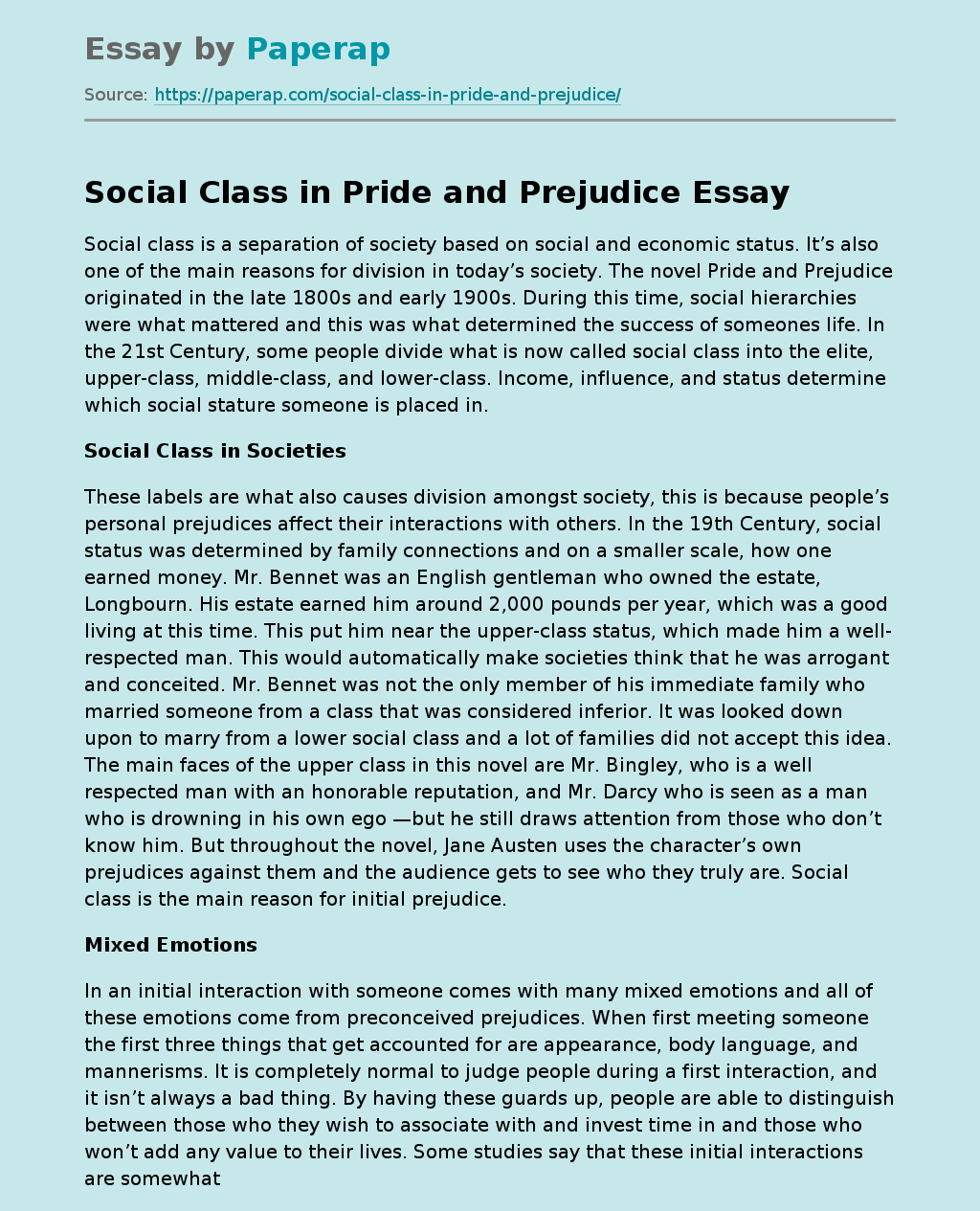Social Class in Pride and Prejudice
Social class is a separation of society based on social and economic status. It’s also one of the main reasons for division in today’s society. The novel Pride and Prejudice originated in the late 1800s and early 1900s. During this time, social hierarchies were what mattered and this was what determined the success of someones life. In the 21st Century, some people divide what is now called social class into the elite, upper-class, middle-class, and lower-class. Income, influence, and status determine which social stature someone is placed in.
Social Class in Societies
These labels are what also causes division amongst society, this is because people’s personal prejudices affect their interactions with others. In the 19th Century, social status was determined by family connections and on a smaller scale, how one earned money. Mr. Bennet was an English gentleman who owned the estate, Longbourn. His estate earned him around 2,000 pounds per year, which was a good living at this time.
This put him near the upper-class status, which made him a well-respected man. This would automatically make societies think that he was arrogant and conceited. Mr. Bennet was not the only member of his immediate family who married someone from a class that was considered inferior. It was looked down upon to marry from a lower social class and a lot of families did not accept this idea. The main faces of the upper class in this novel are Mr. Bingley, who is a well respected man with an honorable reputation, and Mr.
Darcy who is seen as a man who is drowning in his own ego —but he still draws attention from those who don’t know him. But throughout the novel, Jane Austen uses the character’s own prejudices against them and the audience gets to see who they truly are. Social class is the main reason for initial prejudice.
Mixed Emotions
In an initial interaction with someone comes with many mixed emotions and all of these emotions come from preconceived prejudices. When first meeting someone the first three things that get accounted for are appearance, body language, and mannerisms. It is completely normal to judge people during a first interaction, and it isn’t always a bad thing. By having these guards up, people are able to distinguish between those who they wish to associate with and invest time in and those who won’t add any value to their lives. Some studies say that these initial interactions are somewhat accurate in gauging a person’s true intentions. In the novel Pride and Prejudice, Mr. Darcy attends a ball where all the characters have their initial interaction with each other. At this ball, Mr. Darcy remained reserved and the other people characterized him as being conceited and dismissive of those around him.
Jane Austen’s Depiction of Prejudice
This is because he came with Mr. Bingley who set a good image for himself and the upper-class entourage. Elizabeth had a completely different interaction with Mr. Darcy at this ball she overheard Mr. Darcy saying “she is tolerable, but not handsome enough to tempt me; I am in no humor at present to give consequence to young ladies who are slighted by other men. You had better return to your partner and enjoy her smiles, for you are wasting your time with me.” (Austen 7). He says this because she is not the most beautiful and she is from a different social class than him. After this initial interaction, Elizabeth has no intention to ever speak to him again. But later in the novel, the audience sees a change in the characters; When Elizabeth turns down his marriage proposal, it surprises Darcy and he realizes just how arrogant and prejudice he’s been. Later there is a moment where Darcy and Elizabeth speak on how they have both changed. At this turning point, Jane Austen uses the characters and the audience’s own prejudices against them.
Social Class in Pride and Prejudice. (2021, Nov 11). Retrieved from https://paperap.com/social-class-in-pride-and-prejudice/

